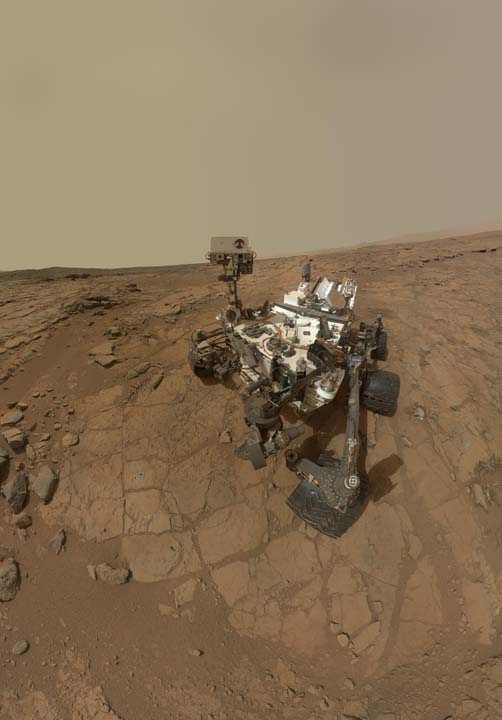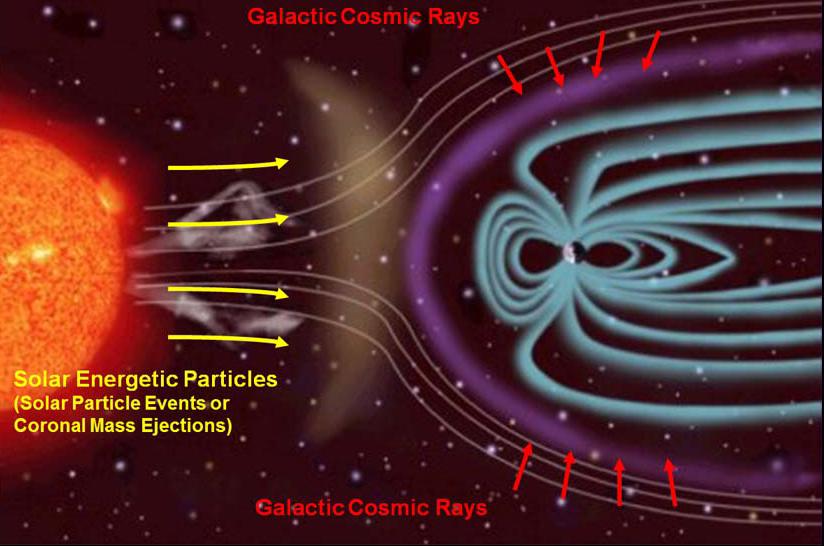An instrument aboard the Mars Curiosity rover has determined that, at current levels of space travel, radiation levels exceed acceptable limits for humans.

The health concerns posed by space travel are numerous, but two of the most concerning to scientists are galactic cosmic rays (GCRs) and solar energetic particles (SEPs). GCRs are caused by supernova explosions and other high-energy events that have occurred outside our solar system. SEPs are associated with coronal mass ejections (CMEs) and solar flares that occur on the sun.
At current technological levels, it takes roughly 6 months to get to Mars.
The Radiation Assessment Detector (RAD), which is the first instrument used to measure the radiation environment during a Mars “cruise mission” from inside a spacecraft which would mimic a human mission, found that, based on the time it takes to get to the planet as well as the shielding levels, would pose too much of a risk to astronauts.
“NASA is planning on sending astronauts to Mars in the 2030s. Before we send them there, we need to understand the hazards that they face,” said Chris Moore, deputy director of advanced exploration systems. “The RAD data will help us design deep space environments and help design radiation shielding.”
- 2021 heat dome fuelled by climate change, intensified wildfire risk: study
- B.C. introduces legislation recognizing Haida Gwaii Indigenous title
- Whale experts confident B.C. orca calf will survive, find family if rescue plan succeeds
- Plastic production cap still contentious as Ottawa set to host treaty talks
The American space agency has established a 3 percent increased risk of fatal cancer during a career limit for its astronauts who live and work in low-Earth orbit, for example on the space station.
The levels of radiation exposure is measured in milliSieverts (Sv), which is one one-thousandth of a Sievert. Curiosity was exposed to 1.8 milliSieverts of GCR per day while en route to Mars. Only about 5 per cent of the radiation dose was associated with SEPs due to a relatively quiet solar cycle with few solar flares or CMEs.
“In terms of accumulated dose, it’s like getting a whole-body CT scan once every five or six days,” said Cary Zeitlin, a principal scientist at the Southwest Research Institute (SwRI) in San Antonio and lead author of the paper on the findings. “Understanding the radiation environment inside a spacecraft carrying humans to Mars or other deep space destinations is critical for planning future crewed missions.”
What this research illustrates is how new technology is needed in order to make better shielding for human spaceflight. The current shielding is good at protecting astronauts against SEPs, but not against GCRs.
Ideally, scientists would need to develop a faster propulsion system as well as better shielding. Two different propulsion systems are being considered that would cut down on travel time: solar electric and nuclear thermal.
Nuclear thermal would drastically cut down on the travel time required to journey to Mars. NASA is working with the U.S. Department of Energy.
“But it’s a long-range plan,” said Moore of the plan. “It will be many years.”
Curiosity launched on November 26, 2011 and reached reached the surface on August 5, 2012.




Comments